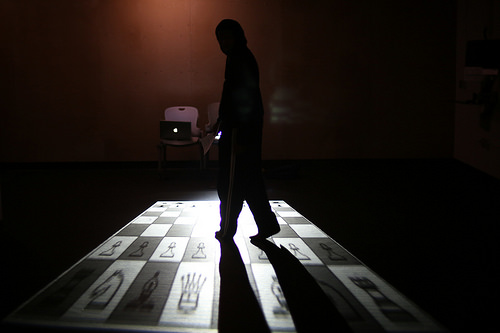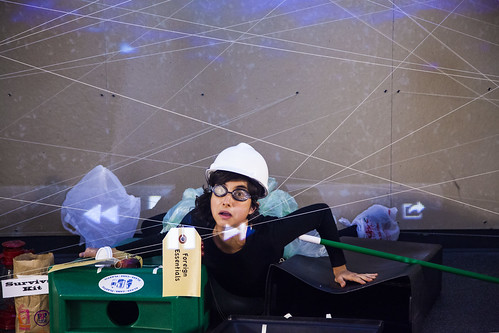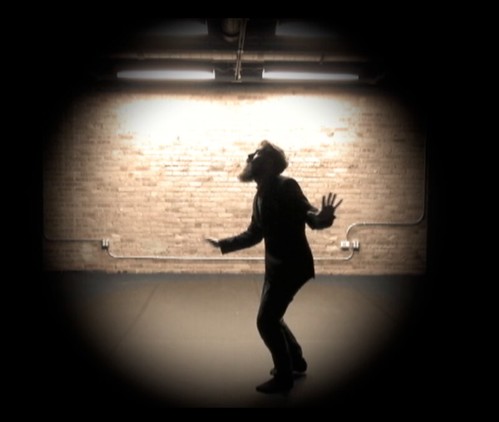
Introducing the Interdisciplinary Arts MA Low Residency Program

Photo courtesy of Interdisciplinary Arts, MA alumnus, Justin Botz. Work by Kendall DeLashment.
This summer, Columbia College Chicago is introducing its first low-residency program. I wanted to share a bit about the new Interdisciplinary Arts Low Res Summer Intensive, MA program, and to do that I went to the source. I spoke to Jenny Magnus, who was kind enough to chat with me.
JL: For prospective students, can you speak on the history of the program? How “old” is the Low Residency program in Interdisciplinary Arts, and what is the story behind its development?
JM: The low residency Masters degree in Interdisciplinary Arts, known as MA Intensive Summer, or “MA IS,” is a new version of an established degree at Columbia College Chicago. The MA in Interdisciplinary Arts has been around for 39 years, always changing and refining into one of the most challenging and exciting Masters degrees available, and one of the first degrees in Interdisciplinary Arts in the country. The call for an Intensive Summer version of the program has been coming into focus for the last 2 years. Many people are looking for ways to advance their art practice and their accreditation during the summer, when they have more focused time. The MA has always been designed for working people—classes are held in the evenings, and it has always been possible to be engaged in one’s own education while continuing to work. The MA Intensive Summer takes that idea to the next level, encouraging working people to carve out nine weeks for two summers to focus on their work and on upping the ante with regards to professional practice and being part of the contemporary art world.
JL: Since the program began, has there been a noticeable trend in why students have chosen to apply to this program?
JM: Some of the reasons people apply to this program is that they are motivated to enter the contemporary art world at a different, more professional level. Also, having a Master’s degree is a way to potentially increase income and status professionally. People apply to this program because they are working on their art, and desire the structure and support of an engaged faculty, equipment and resources, and collaborative cohort.
JL: A major difference between this and the one-year program is the fact that there is more focus on independent study. How does the focus on independent study compare with the one-year MA program? Does it change ithe focus of the program ? In other words, would you say that the one-year program focuses on theory and practice, and the new MA IS focuses on creative process?
JM: I don’t know if I would characterize the differences between the two versions of the degree in that way, no. I think it’s important to reiterate that this is the same course of study, one version happening in a more traditional way—a year-long with two fourteen week semesters and summer capstone classes—and the other being two nine week intensive summers, with an interim year in between, in which independent study occurs. So the biggest differences between the two versions of the program are how immersive they are. With the former, you can work and come to school in the evenings; with the latter, you jump off the edge of the cliff and live, eat, and breathe art process for 9 weeks.

Photo courtesy of Interdisciplinary Arts, MA alumnus, Justin Botz. Work by Lucia Mier YTeran Romero.
JL: A major curiosity for many prospective students is about the staff and alumni of their program. Can you share some information on the instructors for the MA IS program? Also, are there any memorable alumni from the program?
JM: The instructors in this program are absolutely stellar. Jeff Abel, who spearheaded the MA program within Interdisciplinary Arts for years, and designed both the one-year and the intensive summer versions, is a wonderful artist, teacher, and mentor. He is urbane and well traveled and read, and knows the history of Interdisciplinary Art like the back of his hand. He teaches History of Interdisciplinary Art, Sound: Theory and Practice, and the professional practices class Art as Practice. Sherry Antonini is the writing guru; she teaches Word: Theory and Practice. She is a visual + text + sound artist, and an extremely experienced and thoughtful teacher. Writing is at the core of most art making, and she has the ability to tease writing and growth out of everyone. Sherry also teaches Connected Images, the five-day summer powerhouse class. I co-teach that class with Sherry. I also teach the performance class, Drama: Theory and Practice. I am a writer, and maker of all things performative, and I have made it my business to educate myself about the creative process and how people learn, and to teach the student, not the subject. Bryan Saner teaches Movement: Theory and Practice, under the initial watchful eye of the venerable Nana Shineflug, who recently passed away. Both Bryan and Nana place an emphasis on the body and on authentic movement and full commitment to the moment in the body. Nancy Van Kannegan teaches the Visual Art: Theory and Practice class, and she is a jane-of-all-trades in visual art, herself interested in installation, object making, and aesthetics.
Alumni of the program include Barrie Cole, Nicole Garneau, Elise Kermani, Eduardo Villaro, Karen Yates, and many many more.

Photo courtesy of Interdisciplinary Arts, MA alumnus, Justin Botz. Work by Justin Botz.
JL: Any final words to help a prospective student decide which Interdisciplinary Arts MA Program best fits their needs?
JM: I believe this is one of the most exciting processes an artist can enter into: the commitment of time and money towards their own growth and refinement. As someone who has taught in this program for a while, and experienced the cohorts as they come and then go, I see the psychic lightbulb going on in the eyes of people as they reach for expressions that have perhaps been beyond them in the past, but are within their reach with the support and inspiration of the Interdisciplinary Arts, MA program. This degree is more than just “bang for buck,” though it is certainly that. This is life changing work, and depthful growth, a step further into professional practice and explosive focused making of art things.
Thank you so much again for your time. It was such a pleasure to talk with you. And great luck to the future InterArts MA IS cohorts!
